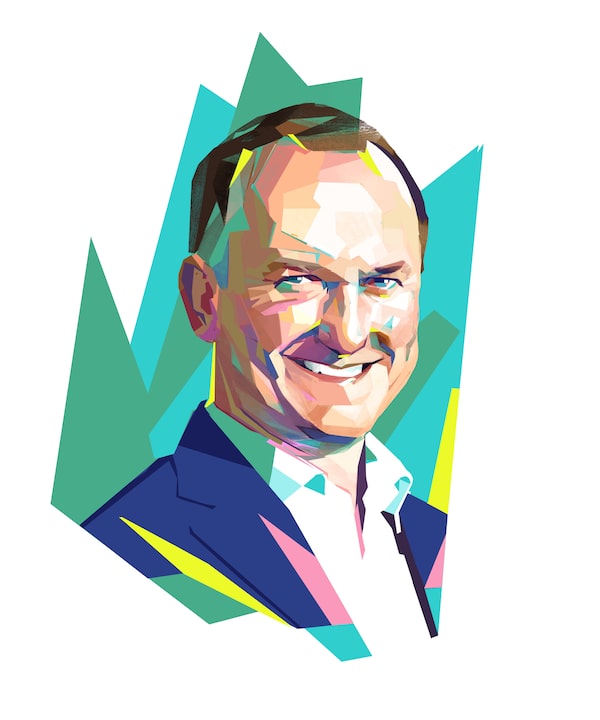
Kyle Scott/The Globe and Mail
“It started with a vision that began in Inverness, on Cape Breton Island, 19 years ago. The community wanted to build a links course on the site of an abandoned coal mine. I was 24. People rightly asked if I’d ever worked at a golf course or golf resort, or if I was an architect or contractor—and I wasn’t any of those. But I’d seen most of the great golf courses—I was on the panel that rated the world’s top 100—and what they all had in common was a phenomenal site.
When the Inverness community passed the baton to me, it was both an honour and a huge responsibility. We began construction on Cabot Links during the global financial crisis, and in some ways, that prepared us for the COVID-19 pandemic, when Nova Scotia closed its border. It soon became clear that we’d only be open that year to the Atlantic Bubble. We were struggling just to survive. We’d also just started construction in Saint Lucia, and flights to that small island nation were cancelled for months. Our crew basically agreed to stay there—without any sense of when they’d get home to see their families—and continue to build through that.
It was a very, very tough moment. But I remember talking to Mike Keiser, my long-time partner in Cabot, and he reminded me that building through a crisis—as we did with Cabot Links—meant we’d be opening on the other side of it. And 2021 was transformative. Once we’d battened down the hatches on our own businesses, we looked at the list of properties we most wanted to acquire if the opportunity arose. We ended up buying World Woods in Florida, which is now open for preview play as Cabot Citrus Farms, and Castle Stuart in Inverness, Scotland—from Inverness, Nova Scotia, to Inverness, Scotland, of all things. We rebranded that as Cabot Highlands, and we’re adding a second course.
Building through the global financial crisis—as we did with Cabot Links—meant we’d be opening on the other side of it
— Ben Cowan-Dewar
Things stabilized in Nova Scotia, too, and both 2022 and 2023 were record years. Golf ended up seeing a renaissance, so it was a pretty shocking turn of events in a few years.
We’ve grown with a philosophy of continuing to find remarkable locations. We look at St. Andrews in Scotland as our ultimate exemplar: It’s been there for 500 years, and when you know something is going to be there for that long, you realize you’re a steward for it. And we’re certainly never going to pick up and leave Inverness. So being integrated into the community is at the core of a sustainable business. When we built Cabot Cliffs, our second course in Cape Breton, we received a permit to build in the sand dunes, which hadn’t happened before in Nova Scotia. And we worked with the province and an amazing environmental scientist, both of whom were pretty skeptical at the beginning, and both of whom, at the end, sort of celebrated it.
And so we see how wonderfully we can coexist with the environment; that we can’t is probably the one thing people get wrong about the golf business. And it’s incumbent on us to do that. When we invest in the locations we do, we’re making an investment over the incredibly long term—in the place, the site and the community. We cared about this stuff before it was fashionable.
I’ve seen hundreds of sites around the world, but the locations we’ve chosen are ones I love going back to time and time again. It feels like I’m at home. And as much as we have criteria for opportunities we’d like to examine, that still feels like the best litmus test of all.”
Your time is valuable. Have the Top Business Headlines newsletter conveniently delivered to your inbox in the morning or evening. Sign up today.